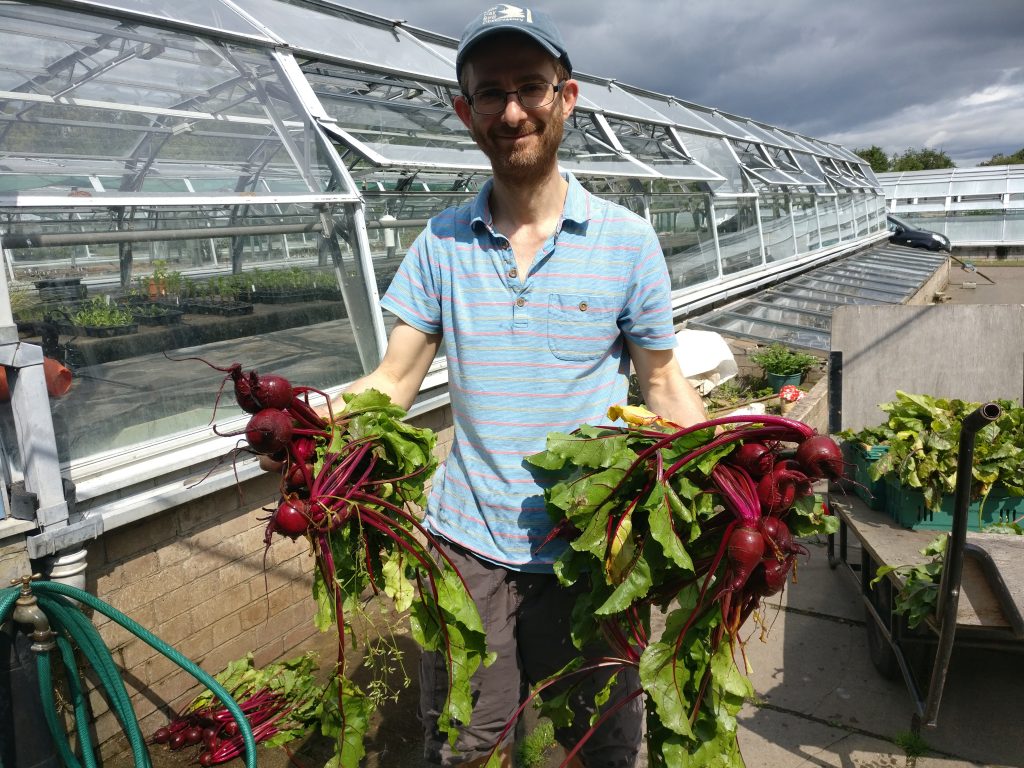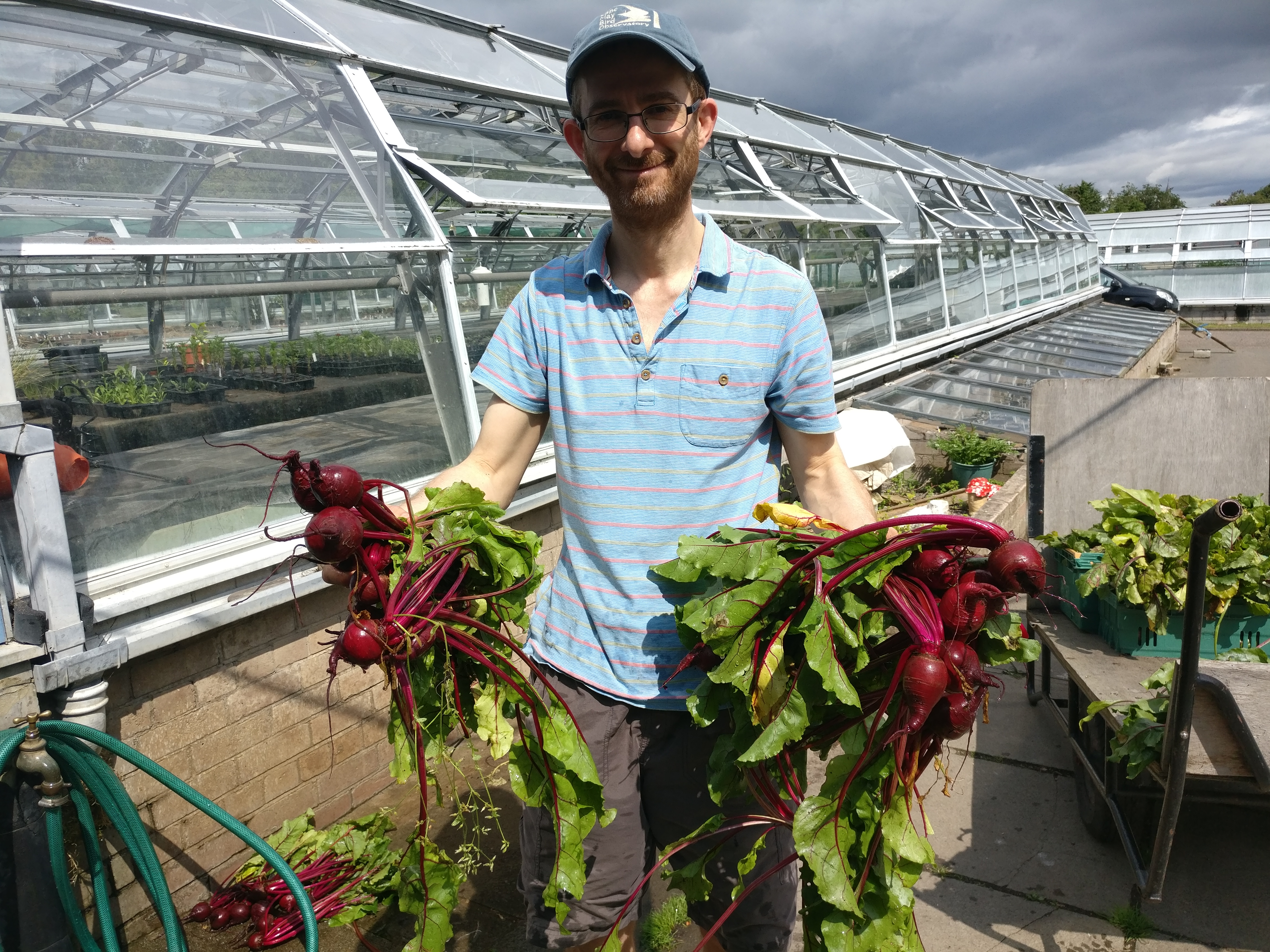
June and July has been busy months for us as we continue planting our modules keep up with our harvest. This month we had horticultural interns, Kateryina and Felix, joining us and it’s been great having them working with us. They have brought with some great ideas with them.
Kateryina came up with the idea of a knotted string with our spacings on it to aid the planting out of our modules – it is a real gamechanger getting rid of a lot of measuring. All our planting at the urban farm can be done with a 25cm knotted string and a 30cm. You just have to plant every second knot or halfway between knots etc.
Another change I have made to our transplanting system is the use of kite string and a reel winder to help us keep our rows straight. They are long, strong, light and the reel prevents tangles knotting. It’s easy and quick to roll in and small enough to fit in your pocket. I’m sure my boss will raise an eyebrow when he sees I’ve been ordering kite parts from online!
Felix is at present building a program for our phones in which we can input the status of the bed on a colour-coded map which was kindly supplied by Will (who incidentally has been on top form with the tomatoes this year!). This will mean that at any time we can see clearly which beds:
- are empty
- have plants growing
- will be harvested in about 2 wks
- need harvesting now.
This would not be so important in a small garden but with over 200 separate sections to plant over 3 separate sites at any given time it will be super helpful.
We are careful about sticking to our systems to ensure consistency. They represent our best thinking at the moment. It is really important, however, to keep asking how it can be improved and being flexible enough to make the changes when good ideas surface. One thing I have noticed is that when followed, they are a great teaching tool enabling volunteers with very little experience to get great results. This feels good and builds confidence. We can help each other stick to our protocols and because they are defined we know where we are. It can seem rigid and detailed at the beginning but once you learn them they are easy clear and can be taught by anyone, they are supportive.
We have laminated refernce sheets for all the vegetables we grow, giving you key information about them which can be checked. In the future, I would like to have laminated sheets outlining our methods for
- Sowing in modular trays
- Direct sowing
- Transplanting modules
- Harvesting
The aim is to have all the needed information in the day to day running of the Urban Farm and Community Food Garden to be kept in “The Book of VEG” – visible, clear and always available not locked away in anyone’s head. This way things are transparent and empowering.
We are pleased to be supplying free vegetables to the community café at the Episcopal church in St Andrews. More to social projects to follow.
Elliott and June


